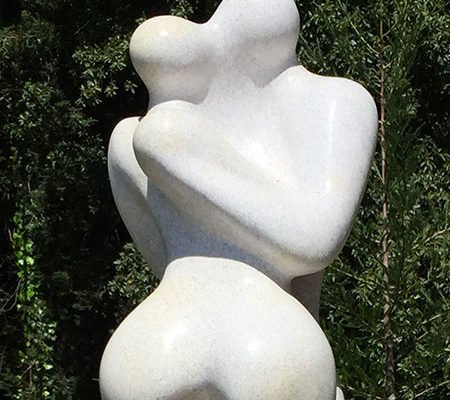 https://aipcf.net/wp-content/uploads/2017/02/couple-1.jpg
450
450
AIPCF
http://aipcf.net/wp-content/uploads/2017/02/logo-aipcf11.png
AIPCF2017-04-03 00:54:532017-05-11 15:00:13Theory and technique of couple psychoanalysis
https://aipcf.net/wp-content/uploads/2017/02/couple-1.jpg
450
450
AIPCF
http://aipcf.net/wp-content/uploads/2017/02/logo-aipcf11.png
AIPCF2017-04-03 00:54:532017-05-11 15:00:13Theory and technique of couple psychoanalysisCouples and Family Psychoanalytical Therapy Models
Psychoanalytic psychotherapy of the couple and attachment
Giulio Cesare Zavattini (Rome, Italy)
Many theorists pointed out that the concept of reciprocity could be seen as an important element of comparison between the paradigm of attachment, the infant research and object relation theory (Fonagy, 2001; Cortina, Marrone, 2003; Stern, 2004; Holmes 2007). These studies shed light on how behaviour and psychological phenomena are not the outcome of isolated intra-psychical processes, but originate in the interface between individual experiential words mutually interacting. Such a process in human beings implies the reciprocal involvement of two minds, where the subjectivity of an individual grows and is moulded being ‘mirrored’ in the other’s eyes.
Basing ourselves on these premises, our Study Group on “Psychoanalytic psychotherapy of the couple and attachment” considers the relation within the couple as an opportunity for the redefinition and restructuring of the identity of the Self (Ruszczynski 1993; Clulow, 2001; Lupinacci, Zavattini, 2002; Santona, Zavattini, 2005; Velotti, Gigli, Zavattini, 2006; Orbach, 2007). In other words, the relation of the couple can be a “developmental chance” for revisioning the Internal Working Models or can negatively contribute to perpetuate the phenomena of discontinuity and dissociation of the self (the ‘alien self’), and the need to ‘externalize’ what had not been elaborated by individuals. Specifically we think that an attachment oriented psychoanalytic psychotherapy of the couple would be considered in regard to a relational conflict theory. This means that mental pain is accounted not as a consequence of failures to resolve conflicts about the satisfaction of instinctual drives, but as a consequence of conflicts connected to not-good enough attachments (Bleichmar, 2003; Schwartz, Pollard, 2004).
At the level of theory of technique, it is necessary not only to fully understand the role of the psychotherapist as a secure base – namely in his function of scaffolding and holding – but also to create, as suggested by Winnicott (1971), that secure-enough base which is strictly necessary to explore the bonds related to insecurity and to try to understand the Internal Working Models of relationships, regarding the present and the theory of the ourselves past and how the whole problem has built up within the current attachment relation with the partner. It is of the utmost importance to pay attention to the quality of the matching of the attachment models of the two partners with regard to what has been defined as complex attachment (Fisher, Crandle, 1997), i.e. to the reciprocal strategies of affects regulation. Namely, it is required to understand which is the boundary between the organization of Self and that one of the encounter of two Self, i.e. the relationship between the individual scene (the repertory of the inner relations of Self and the Other (internal intersubjectivity) and the unconscious couple’s joint (shared intersubjectivity).
Further, the technique of the interpretation should attempt not only to understand the psychical organizations at the individual level, but it also should place the focus of its attention on the configuration of the interactive exchanges in the present field of the session (Baranger, Baranger, 1969; Ferro, 1996; Zavattini, 2001, 2006), where and when the couple and the therapist/s confront each other in a continuous process of scanning of the mental states (transference and countertransference, Norsa, Zavattini, 1997).
So inspiring our work to the latest contributions about intersubjectivity in the technique (Beebe, Lachmann, 2002), we feel important confer particular attention to the procedural aspects, i.e. work on the structure of the exchanges and sequences during the session. On the plan of the interpretation that implies that the therapist places himself either in the position of a proposer of the configurations of the means emerged during the session, and as a catalyst of the intersubjectivity field, intersubjectivity negotiation (Pizer, Pizer, 2005).
Bibliography
Baranger, W., Baranger, M (1969) Problemas del campo psicoanalitico. Kargieman, Buenos Aires.
Beebe, B., Lachman, F.M. (2002), Infant Research and Adult Treatment: Co-constructing Interactions. The Analytic Press, New York.
Bleichmar, H. (2003), Attachment and Intimacy in Adult Relationship. In: Cortina M., Marrone, M. (2003), Attachment Theory and the Psychoanalytic Process. Whurr Publications, London and Philadelphia. 382-405.
Clulow, Ch. (2001, eds), Adult Attachment and Couple Psychotherapy. Brunner-Rutledge, London.
Cortina M., Marrone, M. (2003), Attachment Theory and the Psychoanalytic Process. Whurr Publications, London and Philadelphia.
Ferro, A. (1996) Nella stanza d’analisi. Raffaello Cortina Editore, Milano.
Fisher, J.V., Crandell, L.E. (1997), Complex Attachment: Patterns of Relating in the Couple. Sexual and Marital Therapy, vol. 12, 211-224.
Fonagy, P. (2001), Attachment Theory and Psychoanalysis. Other Press, Usa.
Holmes, J. (2007), Sex, Couples and Attachment: The Role of Hedonic Intersubjectivity. Attachment. New Directions in Psychotherapy and Relational Psychoanalysis, vol. 1, 18-29.
Lupinacci, M.A., Zavattini, G.C. (2002) One Dream for Two People: Dreaming in the Psychoanalytic Couple Psychotherapy. Funzione Gamma Journal, www.funzione gamma.edu.
Orbach, S. (2007) Separated Attachments and Sexual Aliveness: How changing Attachment Patterns can enhance Intimacy. Attachment. New Directions in Psychotherapy and Relational Psychoanalysis, vol. 1, 8-17.
Norsa, D., Zavattini, G.C. (1997) Intimità e collusione. Teoria e tecnica della psicoterapia psicoanalitica di coppia. Raffaello Cortina Editore, Milano.
Pizer, B., Pizer, S.A. (2006), “The Gift of an Apple or the Twist of an Arm”: Negotiation in Couples Therapy. Psychoanalytic Dialogues, vol. 16, 70-92.
Ruszczynski, S. (1993, eds), Psychotherapy with Couples. Theory and Practice at the Tavistock Institute of Marital Studies. Karnac Books, London.
Santona, A., Zavattini, G. C. (2005), Ni avec toi, ni sans toi: collusion et accordage affective dans le couple. Le divan familial, vol. 14, 39-47.
Schwartz, J., Pollard, J. (2004), Introduction to the Special Issue: Attachment-based Psychoanalytic Psychotherapy. Attachment & Human Development, vol. 6, 113.115.
Stern, D.N. (2004), The Present Moment in Psychotherapy and Everyday-Life. W.W. Norton, New
York.
Velotti P., Gigli F., Zavattini G.C. (2006) Le transfert dans le travail avec la famille: un guide pour la reconstruction de l’histoire. Le divan familial, 17, 97-111.
Winnicott, D., W. (1971), Playing and Reality. Tavistock Publications, London.
Zavattini, G.C. (2001), Shared Internal Worlds: Collusion and Affect Attunement in the Couple.
Bullettin of the Society of Psychoanalytical Marital Psychotherapists, vol. 8, 29-37.
Zavattini, G.C. (2006), El “espacio triangular” y el setting en la psicoterapia psicoanalítica de pareja. Psicoanalisis & Intersubjetividad. Familia, pareja, grupos e instituciones, n. 1., www.intersubjetividad.com.ar/
See also :
 https://aipcf.net/wp-content/uploads/2017/02/couple-1.jpg
450
450
AIPCF
http://aipcf.net/wp-content/uploads/2017/02/logo-aipcf11.png
AIPCF2017-04-03 00:54:532017-05-11 15:00:13Theory and technique of couple psychoanalysis
https://aipcf.net/wp-content/uploads/2017/02/couple-1.jpg
450
450
AIPCF
http://aipcf.net/wp-content/uploads/2017/02/logo-aipcf11.png
AIPCF2017-04-03 00:54:532017-05-11 15:00:13Theory and technique of couple psychoanalysis https://aipcf.net/wp-content/uploads/2017/02/couple-4.jpg
450
450
AIPCF
http://aipcf.net/wp-content/uploads/2017/02/logo-aipcf11.png
AIPCF2017-04-03 00:52:492017-05-11 15:02:41Psychoanalytic psychotherapy of the couple and attachment
https://aipcf.net/wp-content/uploads/2017/02/couple-4.jpg
450
450
AIPCF
http://aipcf.net/wp-content/uploads/2017/02/logo-aipcf11.png
AIPCF2017-04-03 00:52:492017-05-11 15:02:41Psychoanalytic psychotherapy of the couple and attachment https://aipcf.net/wp-content/uploads/2017/02/Modeles3.jpg
450
450
AIPCF
http://aipcf.net/wp-content/uploads/2017/02/logo-aipcf11.png
AIPCF2017-04-03 00:50:522017-05-11 15:05:21The place and the practice of CFPT prenatally (before and after birth)
https://aipcf.net/wp-content/uploads/2017/02/Modeles3.jpg
450
450
AIPCF
http://aipcf.net/wp-content/uploads/2017/02/logo-aipcf11.png
AIPCF2017-04-03 00:50:522017-05-11 15:05:21The place and the practice of CFPT prenatally (before and after birth) https://aipcf.net/wp-content/uploads/2017/02/COUPLE-2.jpg
450
450
AIPCF
http://aipcf.net/wp-content/uploads/2017/02/logo-aipcf11.png
AIPCF2017-04-03 00:44:402017-05-11 15:06:24Psychoanalytic Intervention models with the parental couple
https://aipcf.net/wp-content/uploads/2017/02/COUPLE-2.jpg
450
450
AIPCF
http://aipcf.net/wp-content/uploads/2017/02/logo-aipcf11.png
AIPCF2017-04-03 00:44:402017-05-11 15:06:24Psychoanalytic Intervention models with the parental couple https://aipcf.net/wp-content/uploads/2017/02/Modeles5.jpg
450
450
AIPCF
http://aipcf.net/wp-content/uploads/2017/02/logo-aipcf11.png
AIPCF2017-04-03 00:42:422017-05-11 15:08:28The model of Interfantasmatization. The Relational Psychic Apparatus in families, couples and groups.
https://aipcf.net/wp-content/uploads/2017/02/Modeles5.jpg
450
450
AIPCF
http://aipcf.net/wp-content/uploads/2017/02/logo-aipcf11.png
AIPCF2017-04-03 00:42:422017-05-11 15:08:28The model of Interfantasmatization. The Relational Psychic Apparatus in families, couples and groups. https://aipcf.net/wp-content/uploads/2017/05/Famille-1.jpg
500
500
AIPCF
http://aipcf.net/wp-content/uploads/2017/02/logo-aipcf11.png
AIPCF2017-04-03 00:40:442017-05-11 15:10:32Le groupe multi-familial psychanalytique (G.M.F.P.)
https://aipcf.net/wp-content/uploads/2017/05/Famille-1.jpg
500
500
AIPCF
http://aipcf.net/wp-content/uploads/2017/02/logo-aipcf11.png
AIPCF2017-04-03 00:40:442017-05-11 15:10:32Le groupe multi-familial psychanalytique (G.M.F.P.) https://aipcf.net/wp-content/uploads/2017/02/couple3.jpg
450
450
AIPCF
http://aipcf.net/wp-content/uploads/2017/02/logo-aipcf11.png
AIPCF2017-04-03 00:38:472017-05-11 15:26:17The soma is individual; the psyche is essentially a group
https://aipcf.net/wp-content/uploads/2017/02/couple3.jpg
450
450
AIPCF
http://aipcf.net/wp-content/uploads/2017/02/logo-aipcf11.png
AIPCF2017-04-03 00:38:472017-05-11 15:26:17The soma is individual; the psyche is essentially a group https://aipcf.net/wp-content/uploads/2017/02/Modeles8.jpg
450
450
AIPCF
http://aipcf.net/wp-content/uploads/2017/02/logo-aipcf11.png
AIPCF2017-04-03 00:35:542017-05-11 15:22:20Specific nature of our model within the context of PCFT: Field link and co therapy using psychoanalytic psychodrama.
https://aipcf.net/wp-content/uploads/2017/02/Modeles8.jpg
450
450
AIPCF
http://aipcf.net/wp-content/uploads/2017/02/logo-aipcf11.png
AIPCF2017-04-03 00:35:542017-05-11 15:22:20Specific nature of our model within the context of PCFT: Field link and co therapy using psychoanalytic psychodrama. https://aipcf.net/wp-content/uploads/2017/02/lolo_ipi.gif
148
177
AIPCF
http://aipcf.net/wp-content/uploads/2017/02/logo-aipcf11.png
AIPCF2017-02-22 11:23:312017-05-11 15:24:48IPI’s way of working
https://aipcf.net/wp-content/uploads/2017/02/lolo_ipi.gif
148
177
AIPCF
http://aipcf.net/wp-content/uploads/2017/02/logo-aipcf11.png
AIPCF2017-02-22 11:23:312017-05-11 15:24:48IPI’s way of working




